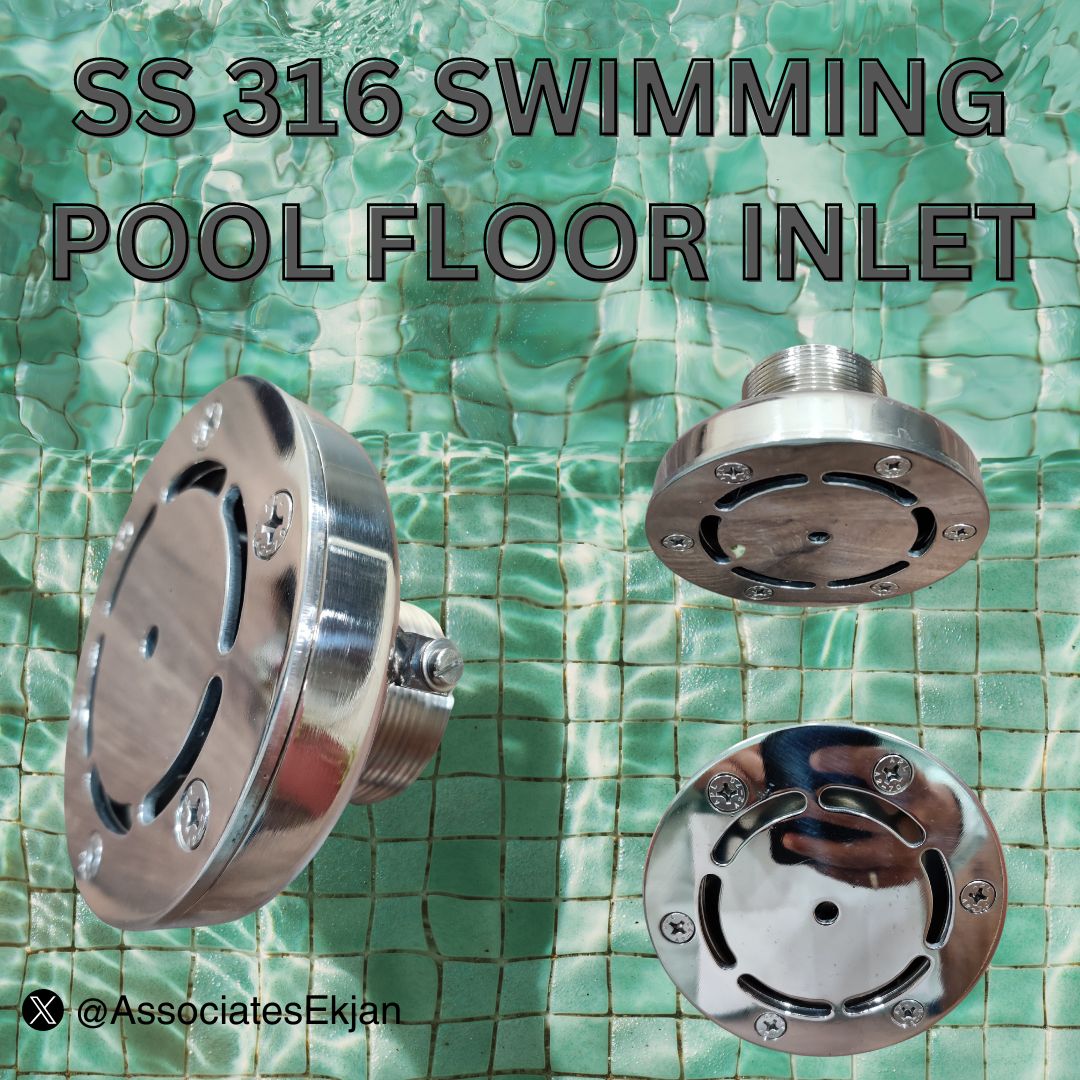
2023-11-09T11:58:31
Stainless Steel (SS) 316 pool return inlets are commonly used in swimming pools made of concrete for several important reasons, and the inclusion of an earthing plug welded on them serves a specific safety purpose: 1. Corrosion Resistance: SS 316 is a type of stainless steel known for its exceptional corrosion resistance. Swimming pool water contains chlorine and other chemicals that can be corrosive, especially in an environment with varying water pH levels. SS 316 resists corrosion, ensuring the longevity and durability of pool return inlets. 2. Durability: Concrete pools are typically long-lasting structures. Using SS 316 for pool return inlets ensures that they can withstand the test of time and maintain their structural integrity despite exposure to pool chemicals and water. 3. Safety: SS 316 is a non-corrosive material, which means it will not deteriorate or develop sharp edges over time. This is important for safety, as any deterioration could lead to injuries for swimmers if they come into contact with a damaged inlet. 4. Aesthetics: SS 316 is known for its sleek and attractive appearance. Inlet fittings made from this material contribute to the overall aesthetic of the pool. Regarding the earthing plug welded on the SS 316 pool return inlets: 1. Electrical Safety: The inclusion of an earthing plug on pool return inlets is primarily a safety measure to prevent electrical hazards in the pool. It helps to prevent potential electrical shock incidents that can occur in and around the pool. 2. Grounding: The earthing plug is connected to a grounding system. In the event of a fault or electrical leakage in the pool's electrical components (e.g., pool pumps, underwater lights), the grounding system provides a safe path for the electrical current to be directed into the ground, preventing it from traveling through the water and potentially causing harm to swimmers. 3. Compliance with Safety Standards: In many regions, electrical standards and codes require that swimming pools and related electrical components, including pool return inlets, are properly grounded to reduce the risk of electric shock. The earthing plug ensures compliance with these safety standards. In summary, the use of SS 316 pool return inlets in concrete swimming pools is primarily for their corrosion resistance, durability, and safety. The inclusion of an earthing plug on these inlets is essential to protect swimmers from electrical hazards and to comply with safety standards and regulations. ABS (Acrylonitrile Butadiene Styrene) is a plastic material commonly used in pool return inlets, and it is known for its corrosion resistance. In many cases, ABS pool return inlets are a suitable and cost-effective choice for swimming pools. However, there are still reasons to choose stainless steel (SS) return inlets over ABS, even if corrosion resistance is not the primary concern: Durability: While ABS is corrosion-resistant, it may not be as durable as stainless steel in terms of impact resistance and wear and tear. Stainless steel is a more robust material and can better withstand physical stress and the potential for damage in a pool environment. Longevity: Stainless steel is generally more durable and long-lasting than ABS. In areas with high usage or harsh conditions, SS return inlets may have a longer service life, which can save on replacement and maintenance costs over time. Aesthetics: Stainless steel is often chosen for its aesthetic appeal. It has a sleek and attractive appearance that some pool owners and designers prefer. It can contribute to the overall upscale look of the pool. Heavy Flow: In pools with high flow rates or those with specialized features, such as strong jets for exercise or water features, stainless steel return inlets may be preferred because they can handle higher water pressure and flow. Customization: Stainless steel return inlets can be custom designed and fabricated to specific shapes and sizes, making them suitable for unique or architecturally distinctive pool designs. Environmental Considerations: Stainless steel is a recyclable material, making it an eco-friendly choice for those who prioritize sustainability. That said, ABS return inlets are perfectly acceptable for many standard pool applications, and they are widely used in the industry due to their corrosion resistance and cost-effectiveness. The choice between SS and ABS return inlets will depend on the specific needs and priorities of the pool owner, the type of pool, and the local environment. Both materials have their advantages, and the decision should be based on a careful assessment of your pool's requirements and your personal preferences.

Have a question? Ask here!
Required fields are marked *